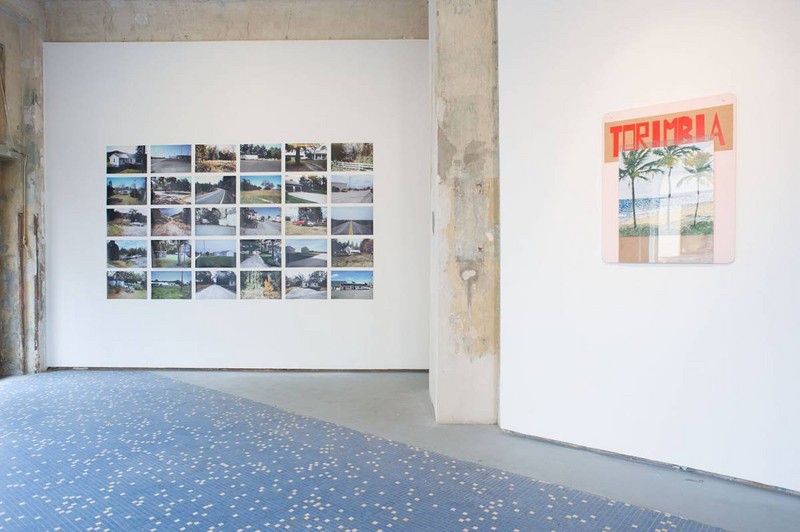Where we are / Donde estamos
27 Mar - 03 May 2015
D21 Kuratoren LAB
WHERE WE ARE / DONDE ESTAMOS
27 March – 3 May 2015
Artists: Amaia Gracia Azqueta, Antonio Barea, Pau Figueres, Ibai León Azcarate, Sandra Montero, Eriz Moreno Aranguren, Juan Pablo Ordúñez
Curation: Ines Bermejo
How do places influence artistic thinking and feeling? To what extent do they shape actions, convictions and creative expression? In what way do places impact on the production of art? Do certain ‘schools’ or themes exist that are site-specific? How do they evolve?
Physical sites build the basis for the development of identity and personality. Environment and social structures determine points of view, ways of thinking and modes of action. Through them spaces are transformed into places, perhaps even into homes. Places contribute to cultural identity and manifest certain languages, whether they be verbal or artistic.
Actual presence in particular places allows for action as a (political) subject since stability, localisation and knowledge of cultural patterns make interventions safer than action undertaken in virtual or unknown sites. For artists, being present at the site is an important criterion for the possibility of artistic action and allows for responses within a given site-specific structure - which has been the case since at least the development of site-specific art in the 1960s. As such, a place does not only shape the people, but through human action the place itself is affected and changed by means of a (collective) will. According to Hormuth, the artist never responds to the place itself but rather always to its meaning, which results in the emergence of ‘symbolic locations’ (Detllev Ipsen); the place becomes a setting for artistic intervention. And yet – can we even talk of a site of production that builds identity in today’s globalised art world? Perhaps it is pertinent to follow up with a question about whether it is actually in artworks and in the artist’s creative processes that sites of production become visible.
The exhibition project »Where we are / Donde estamos« will address these questions by means of two exhibitions with artists from Bilbao and Leipzig, realised within the framework of the new D21 ‘Curator’s Lab’. Seven artistic positions will be shown in both cities respectively, each dealing with the issue of localisation. These artistic positions will not, however, relate solely to physical places of origin, but will also address our action in hybrid realities and our ideas of different local and spatial realities as they develop in culture and science, amongst other areas.
The renewed cooperation between D21 Kunstraum and Fundacion Bilbao Arte, as well as the collaborative curation of both exhibitions by curator Ines Bermejo from Bilbao and curator Constanze Müller from Leipzig will continue to build bridges between both places.
This collaboration allows artistic production to be viewed from two perspectives with different understandings of art and also enables the questioning of site specificity in relation to the curatorial.
Curation in Bilbao: Constanze Müller
WHERE WE ARE / DONDE ESTAMOS
27 March – 3 May 2015
Artists: Amaia Gracia Azqueta, Antonio Barea, Pau Figueres, Ibai León Azcarate, Sandra Montero, Eriz Moreno Aranguren, Juan Pablo Ordúñez
Curation: Ines Bermejo
How do places influence artistic thinking and feeling? To what extent do they shape actions, convictions and creative expression? In what way do places impact on the production of art? Do certain ‘schools’ or themes exist that are site-specific? How do they evolve?
Physical sites build the basis for the development of identity and personality. Environment and social structures determine points of view, ways of thinking and modes of action. Through them spaces are transformed into places, perhaps even into homes. Places contribute to cultural identity and manifest certain languages, whether they be verbal or artistic.
Actual presence in particular places allows for action as a (political) subject since stability, localisation and knowledge of cultural patterns make interventions safer than action undertaken in virtual or unknown sites. For artists, being present at the site is an important criterion for the possibility of artistic action and allows for responses within a given site-specific structure - which has been the case since at least the development of site-specific art in the 1960s. As such, a place does not only shape the people, but through human action the place itself is affected and changed by means of a (collective) will. According to Hormuth, the artist never responds to the place itself but rather always to its meaning, which results in the emergence of ‘symbolic locations’ (Detllev Ipsen); the place becomes a setting for artistic intervention. And yet – can we even talk of a site of production that builds identity in today’s globalised art world? Perhaps it is pertinent to follow up with a question about whether it is actually in artworks and in the artist’s creative processes that sites of production become visible.
The exhibition project »Where we are / Donde estamos« will address these questions by means of two exhibitions with artists from Bilbao and Leipzig, realised within the framework of the new D21 ‘Curator’s Lab’. Seven artistic positions will be shown in both cities respectively, each dealing with the issue of localisation. These artistic positions will not, however, relate solely to physical places of origin, but will also address our action in hybrid realities and our ideas of different local and spatial realities as they develop in culture and science, amongst other areas.
The renewed cooperation between D21 Kunstraum and Fundacion Bilbao Arte, as well as the collaborative curation of both exhibitions by curator Ines Bermejo from Bilbao and curator Constanze Müller from Leipzig will continue to build bridges between both places.
This collaboration allows artistic production to be viewed from two perspectives with different understandings of art and also enables the questioning of site specificity in relation to the curatorial.
Curation in Bilbao: Constanze Müller

